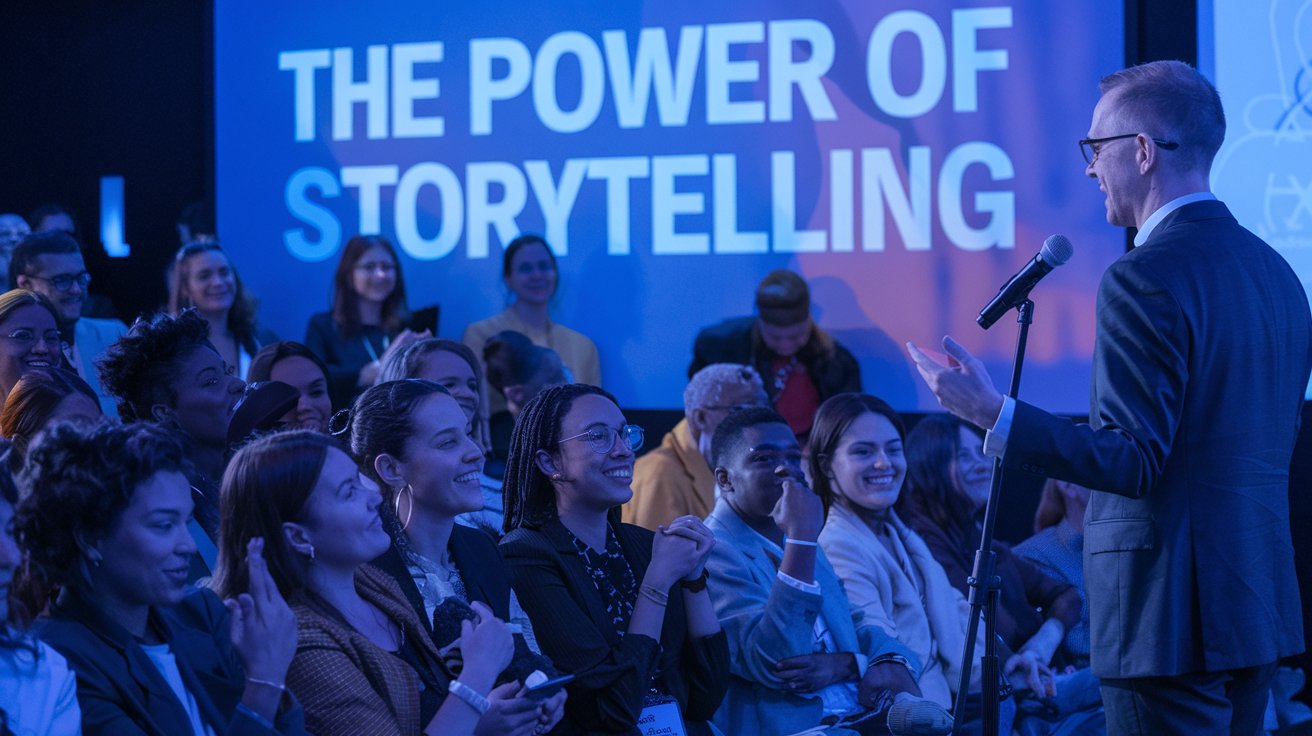Part 1: The Power of Storytelling in Live Events
When was the last time you watched something that left a lasting impact?
The Power of Stories in Human Connection
Imagine attending yet another corporate summit only this time the keynote speaker shares a personal story of overcoming adversity. This narrative doesn’t just inform; it captivates, it draws you in, uniting the audience with a shared sense of connection and emotion. Now, you’ve got their attention. This is the power of storytelling in live events.
Storytelling in live events is more than just presenting information on PowerPoint slides; it’s about creating a narrative that resonates emotionally. This approach transforms standard events into experiences that leave a mark, driving deeper engagement, retention, and attention.
In this series, we’ll explore the strategies for incorporating storytelling into live events, provide real-life examples, and offer resources to help you create more engaging and memorable experiences. The ones that get talked about long after your audience has left the lobby or the livestream.
Understanding Storytelling in Live Events: Definition and Core Elements
Storytelling in live events involves key elements such as characters, plot, conflict, and resolution. These components work together to craft a narrative that captures and retains the audience’s attention. It takes them on a journey so they feel involved and invested instead of talked at.
Characters
Characters are the heart of any story. In the context of live events, characters can be speakers, performers, or even the audience members themselves. They should be relatable and engaging providing a human element that audiences can relate to and connect with emotionally. Effective characters are well-developed and dynamic, allowing the audience to see themselves in their journeys and experiences.
Plot
The plot is the sequence of events that make up the story—the beginning, middle, and end. It provides structure and direction, guiding the audience through the narrative. A well-crafted plot in a live event ensures that the audience remains engaged throughout.
Conflict
Conflict is the driving force of a story. It creates suspense keeping the audience invested in the outcome. It introduces challenges or obstacles that the characters must overcome, creating tension and interest. In live events, conflict can be presented as problems to be solved, goals to be achieved, or adversities to be faced.
Resolution
Resolution is the conclusion of the story where conflicts are resolved. It should tie up loose ends and give the audience closure, clarity, and satisfaction. In live events, this can present as a plan or path to success often leaving them with a sense of fulfillment. A call to adventure that hopefully inspires them to take action or think differently.
The Role of Emotion
Emotions are at the heart of effective storytelling. Stories that evoke emotions can significantly enhance audience engagement and retention. Research shows that emotionally charged content is more likely to be remembered and shared.
Read the science behind the power of storytelling here and here.
The TL:DR
Storytelling in live events is crucial for creating emotional connections, enhancing engagement, and making events memorable. By incorporating characters, plot, conflict, and resolution, you can craft compelling narratives that resonate with your audience and make an impact.
Stay tuned for the next article in this series, where we will explore the benefits of storytelling in live events—from enhanced audience participation to forging deeper connections—and how they play a part in transforming your event into an unforgettable experience.
